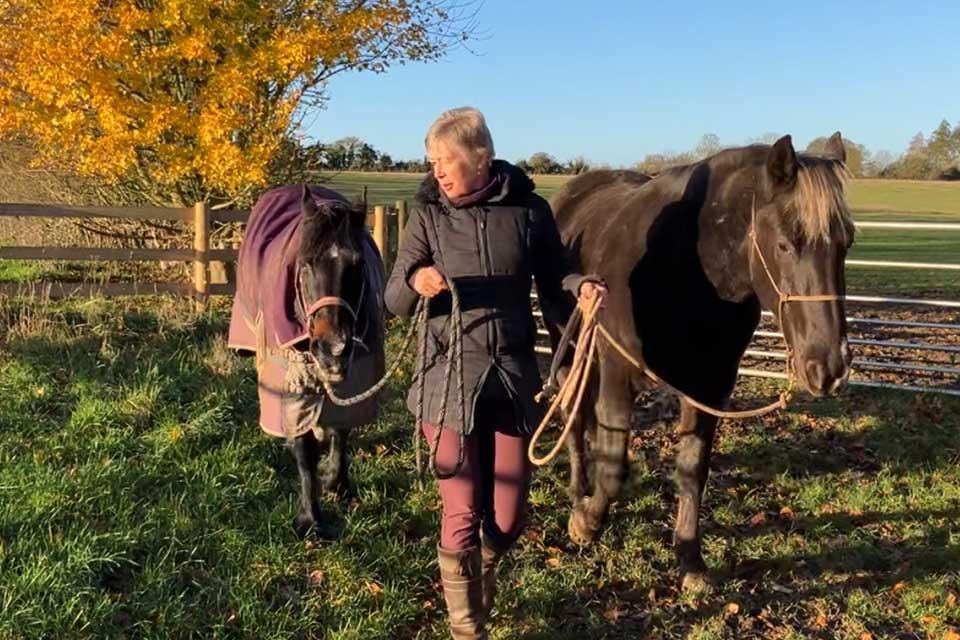We work among extraordinary people doing extraordinary things; get to know some of them by reading these quick-fire interviews.
Name: Dr Lavina Snoek
Job title: Departmental Laser Safety Officer
What are you currently working on?
Today I will be giving the (online) laser safety lecture to new members of the department and visitors, followed by emailing them the link to my online laser safety quiz which is a key part of the training. I offer this every two weeks so that newcomers can get access to their laser labs as soon as possible. Because I am working from home today, I’ll get on with admin, such as marking and giving feedback on quizzes from previous attendees, going through risk assessments and local rules documents, always analysing them with the British Standards and AURPO guidelines and an HSE inspector’s perspectives in mind...
I have been at the ‘grumpy, receiving end’ of health and safety for many years, so I try to cause as little disruption and frustration from the implementation of laser safety requirements as I can, and I hope to help people understand their necessity!
Describe a typical day
I like it that there is an interesting variety of activities, eg visiting laser groups in the department and advising them about their laser set-ups and protective eyewear (‘goggles’), preparing and carrying out laser lab inspections, updating the laser inventory – which has reached more than a thousand entries, some obsolete – going to (laser-related) seminars, comparing notes with colleagues in Biochemistry and Engineering, and also attending the termly meetings from MPLS, Physics, and meetings with laser safety officers from the other departments and members of the University Safety Office.
If you had an entire day at your disposal (not at work/studying), what would be your ideal way to spend it?
Ah... I shouldn’t sound too eager here! I would spend more time at the DIY stable yard where our ponies, a 31-year-old wise Welsh cob and a 3.5-year-old very inquisitive and naive youngster, are kept. There is always something to do – training, videoing our training sessions, playing at liberty, doing stable chores... I would spend the rest of the day studying my (too many) classical dressage training books and the online courses for training horses according to this method. Training horses is by far the most difficult thing I have ever done!
Recently I have also had to learn a lot about equine endocrinology when our old pony developed Pituary Pars Intermedia Dysfunction or PPID, an endocrine disorder of the pituitary gland. I enjoy reading veterinary research articles to get a better insight into how PPID can affect various aspects of the horse’s metabolism, and I have my one-sample study in the field.
What is your favourite place in Oxford?
My favourite indoor places are the Museum of Natural History, the Ashmolean Museum and the Duke Humfrey’s Library. Outdoor places are the University Parks for lunchtime strolls, and a bit further afield Otmoor, Waterperry Gardens and the Uffington White Horse.
Plan B: what would you be if you weren’t doing the job you are currently doing?
See question 3: I would dedicate myself to full-time study and application of classical equitation – think Spanish Riding School in Vienna, Austria. The training methods are based on the writings of two famous riding teachers from the French courts of Louis XIII – XIV, when the focus of (aristocratic) horse riding had shifted from survival in warfare to the Art of Riding, but they can ultimately be traced back 2,000 years to Xenophon. The horse’s education starts by teaching progressive gymnastic exercises from the ground without a rider, thus developing the muscles for a correct balance. Then the process will be repeated with the added weight of a rider on top. It is a slow process taking at least 6 to 8 years that shouldn’t be started before the horse is around 4 years old, but it is worth the effort since it will create a horse which remains healthy to an advanced age. To illustrate: in Vienna the minimum age at which a Lipizzaner stallion will start performing in the School Quadrille is around 10 years old, and he retires around 25. Compare that with the fact that ‘modern dressage’ horses are allowed to compete at Grand Prix level at 8 years old when their body is just about fully matured. This implies that most of the training has been done while they were still growing and developing, causing irreparable damage to bones and soft tissue.
Fortunately, there are a number of instructors in the UK, and international online clinics have also become a good alternative. For the last five years our old pony has been a very patient and forgiving ‘guinea pig’ with our training. At the start neither of us knew what we were doing, which is not an ideal situation, but we are both progressing nicely. I have also just started with our youngster and he is picking it up so well, that I have to be careful not to want to do too much!

